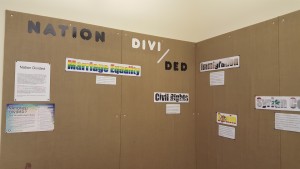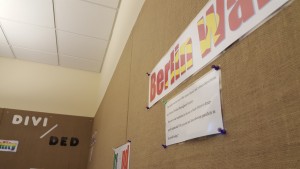 Are nations constructed of arbitrary borders traced on a map, or are they more purposeful, formed around kinships and collectives, representing common values, ideals, and epistemologies? Can a nation or nations be truly united, or do the forces that shape human meaning-making stem from the differences that parse us one from another?
Are nations constructed of arbitrary borders traced on a map, or are they more purposeful, formed around kinships and collectives, representing common values, ideals, and epistemologies? Can a nation or nations be truly united, or do the forces that shape human meaning-making stem from the differences that parse us one from another?
The histories of nations and peoples are framed by divisions. This year the United States will recognize the sesquicentennial of the conclusion of the Civil War, which saw this nation divided and led to a loss of life unrivaled in our national history. The conclusion of this conflict saw a period of Reconstruction and reunification, but historians have and continue to question the degree to which the United States has ever been truly united from its founding as an independent republic. Current political, cultural, social, and economic fissures reify national divides in public opinion and lived experience. Many nations experience a similar phenomenon of unity/disunity as individuals seek authentic, lived experiences that transcend national boundaries, loyalties, identities, histories, and geographies.
The theme of “Nation(s) Divided?” invites us to cross, intersect, and transcend borderlands in the ways we  think about others and ourselves by deconstructing notions of unity and division, of nations and national identities. We invite all students, faculty, and staff to explore the concepts and realities of “Nation(s) Divided?” through the Interactive Wall at The Ames Library. Located in the southeast corner of the first floor, this space is available for faculty and students to share their course work or any other projects related to the IWU intellectual theme of “Nation(s) Divided?”.
think about others and ourselves by deconstructing notions of unity and division, of nations and national identities. We invite all students, faculty, and staff to explore the concepts and realities of “Nation(s) Divided?” through the Interactive Wall at The Ames Library. Located in the southeast corner of the first floor, this space is available for faculty and students to share their course work or any other projects related to the IWU intellectual theme of “Nation(s) Divided?”.
Within the world, global conversations are taking place around: immigration and emigration, environment and human impact, threats and risks to global health, economic and political instability, freedom of expression as it intersects with faith and religion, and constructions of human identity and self-understanding, just to name a few. These conversations have the potential to unite or to divide us as nations and as individuals, but we have an opportunity to achieve mutual and holistic understanding through nuanced, thoughtful exploration in the best tradition of the liberal arts.
